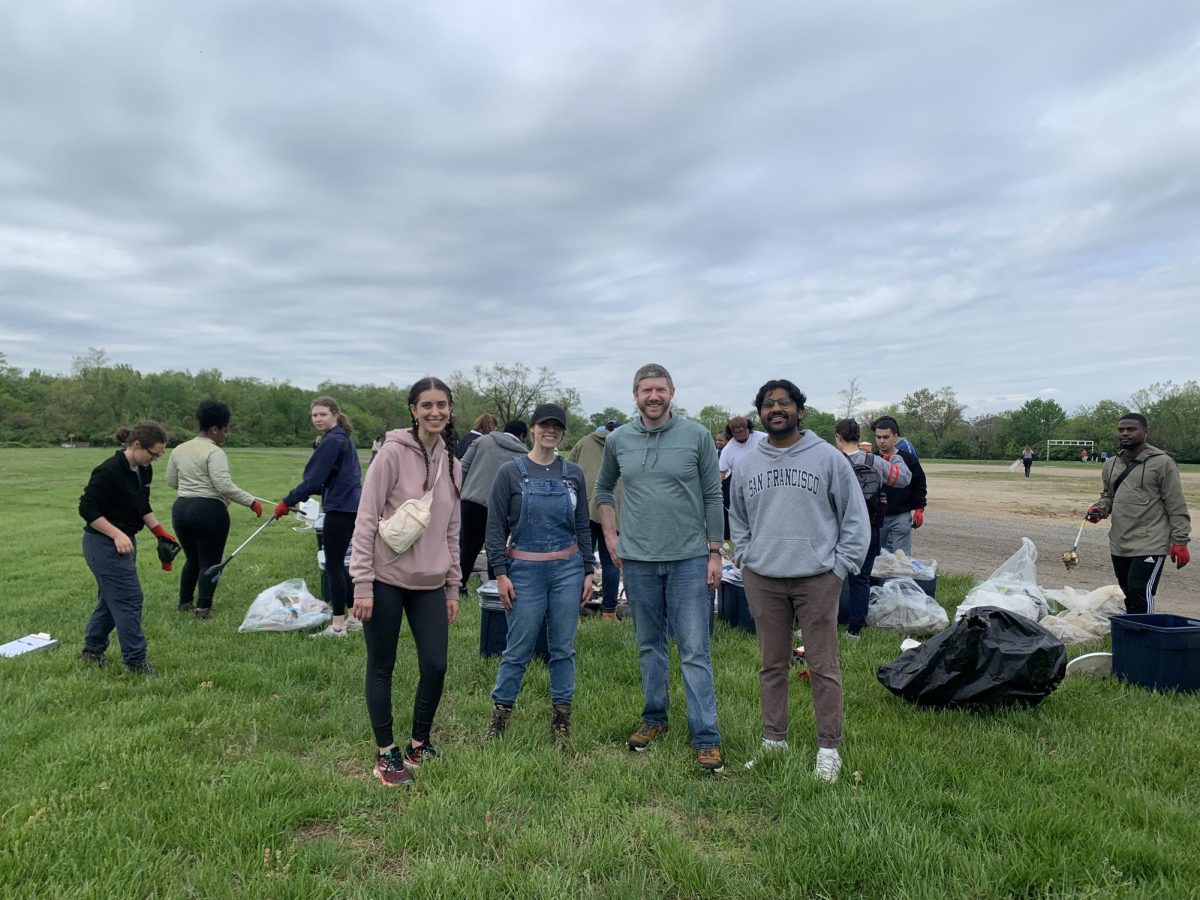The experts who set the Doomsday Clock, a symbol forewarning imminent global destruction, shared insight on their decision to program the clock for 2024 at Georgetown University’s Doomsday Clock Town Hall on Jan. 23.
The Clock is meant to warn the public of incoming global destruction based on nuclear risk, climate change, disruptive technologies and biosecurity concerns. If the Doomsday Clock reaches midnight, it signals that the world has undergone a global disaster to annihilate humanity. The Science and Security Board of the Bulletin of the Atomic Scientists, the media organization that advocates taking action on these issues and controls the clock’s time, set the clock to 90 seconds until midnight for the second year in a row.
Katherine Collin, the director of the master of arts in conflict resolution at Georgetown, moderated the panel discussion and the subsequent question-and-answer session. The speakers featured members of the Science and Security Board: Robert Socolow, professor emeritus in the department of mechanical and aerospace engineering at Princeton University; Jon Wolfsthal, director of global risk at the Federation of American Scientists; Robert Latiff, an adjunct professor at the University of Notre Dame and a research professor at George Mason University’s school of engineering; and Rachel Bronson, the president and CEO of the Bulletin of the Atomic Scientists.
Although there was no change in the time on the Doomsday clock from 2023-2024, Bronson said that the clock is at a dangerously close point to midnight.
“90 seconds to midnight is the closest it’s ever been to midnight in the whole history of us setting the clock, which first began in 1947. And we mean it when we put it there,” Bronson said.
“90 seconds to midnight is very dangerous. It’s unsustainable, and if the current environment feels unsettling and worrisome and seems to be going in the wrong direction, we agree. That’s what 90 seconds feels like,” Bronson added.
Socolow said the intersections of climate change and international policy are major factors in setting the clock’s time each year, referencing “Drill, baby, drill,” a 2008 Republican slogan in support of increasing petroleum and gas drilling despite climate change concerns, in comparison.
“There was a fading of commitment this past year in the fossil energy world for dealing with climate change compared to ‘Drill, baby, drill.’ We also talked about how the Ukraine war really led to a deterioration of the capacity and the appetite for dealing with global issues,” Socolow said. “The Russian-American relations had been very important in building confidence and dealing with climate change; the Chinese-American relations even more so. And we had a lot of slippage.”
The Bulletin’s Science and Security Board meets twice a year to consult with its Board of Sponsors — which include nine Nobel Laureates — to change the time on the clock if needed based on current levels of climate change, nuclear risk and technological threats.
According to Socolow, the board’s process for analyzing the annual risks of climate change is based more on the world’s capacity to respond to rising CO2 levels over the levels of CO2 themselves.
“Do we take that into account and say the world is more dangerous every year? We certainly could, but I tend to say that’s background. What really matters is our capacity to address the problem, because that can go up or down,” Socolow said.
Wolfsthal said that humanity’s ability to respond appropriately to the threat of nuclear war has decreased over time with the rise in artificial intelligence usage, climate change and global conflict.
“The fact that you’re dealing with active military conflict in Ukraine, you have border disputes, the possibility of India and China still engaging in conflict, India and Pakistan, nobody knows what’s going to happen in Europe, those are all the dynamics,” Wolfsthal said.
Wolfsthal added that the Doomsday Clock’s current status is closer to midnight than it was during the Cuban Missile Crisis, when the United States narrowly averted a nuclear war confrontation with the Soviet Union, since modern technology’s instantaneous access to information can often result in misinformation and swiftly exacerbate conflict.
“Now you throw the destabilizing effects of technology into these dynamics,” Wolfsthal said. “Things moved a little slower when it was just Kennedy and Khrushchev picking up the phone and trying to work something out, but now you’re being fed data through your early warning network and it’s displaying information that can be real or can be a simulation tape.”
“If you look at the overall situation, I think we’re all pretty comfortable saying this is a less manageable situation,” Wolfsthal added.
Bronson said that the only way to address the fear of the Doomsday Clock’s position is taking action.
“These problems don’t get solved unless people are involved, and so we need to pick what motivates us and get behind that,”Bronson said. “Because others are out there trying to make a difference.”














